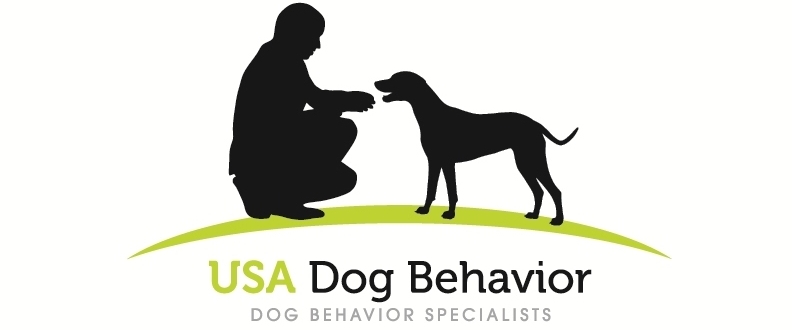A Dozen Reasons to do Your Homework Before Sending Your Dog Away for Training
©Scott Sheaffer, CDBC, CPDT-KA, USA Dog Behavior, LLC
It sounds so convenient. Just ship your dog to a dog training facility for two weeks and she’ll come back the dog you’ve always envisioned. If only it was that easy.
"Some of my professional peers manage reputable and competent board-and-train facilities. I have no problem whatsoever referring dog owners to them."
This concept is known as “board-and-train”. There are certainly good board-and-train dog trainers and dog training facilities; unfortunately, some use techniques and practices that make me, and should make you, uncomfortable.
I’ve provided a 12-point checklist below for you to consider before sending your dog to a board-and-train facility. These are presented in no particular order.
Board-and-train facilities can charge in the thousands of dollars for training your dog. They can be very expensive. Dog trainers and dog behavior specialists typically charge a total of $300 - $1,000 to work one-on-one with a dog and owner at the owner’s home for a total of five sessions. Investigate what you are actually getting for your money.
How much time are they going to give your dog? Are they going to work multiple hours a day with your dog or are they only going to work a few minutes a day and “cram” a day or two before you pick him up? Ask yourself; does your dog really need to be gone for two weeks to get this training?
Remember, behind closed doors, no one cares for your dog more than you. Are you confident they will treat your dog humanely and properly in your absence?
Any dog trainer or dog training school knows the quick-and-easy way to training results (or what looks like results) is through the use of aversive punishment such as shock collars, prong collars, etc. While this may be a time efficient technique for the board-and-train, it can cause all kinds of long-term behavior issues that revolve around fear. Ensure they only use positive reward training.
Dog training is really people training. If a dog’s human family is not intimately involved in the training process, how can the family adequately reinforce what has been trained? A one-hour session with the owners after two weeks of boarding in order to “show what has been trained” is not enough. Ask what kind of “transfer-of-knowledge” training the facility provides.
It’s common knowledge among dog behavior consultants and behaviorists that dog owners sometimes come to us for help after their dog has spent a stressful two weeks at a questionable board-and-train. Don’t just look at the marketing materials regarding a facility’s reputation; check multiple external sources.
Larger board-and-train schools can employee part-time trainers who are relatively new to the business. Find out who will be training your dog and what his or her experience and dog training credentials are.
Buying a puppy from a dog breeder? Be extremely careful if they offer to keep your new puppy an additional few weeks for training (i.e., board-and-train) before you pick up the new bundle. This is not the best way to train a puppy and can cause the young puppy to miss important social interaction periods with the public that are needed for behavioral development – just missing two weeks can be detrimental. Find out why the breeder offers these services and why he or she is recommending this. These additional services can be extraordinarily, and unnecessarily, expensive too.
For dogs dealing with separation anxiety, aggression and fear issues, taking the dog out of the home can introduce anxiety into the training process that works against positive progress. Ask how they will recognize and deal with this issue.
Generalization is a term used by dog trainers to indicate that a dog will perform certain behaviors in multiple contexts. For example, a dog that has generalized the “sit” cue will perform it in multiple locations and for anyone who asks the dog to sit. Your dog may learn to heel when walked by Sally at the board-and-train but has no idea what you are talking about when you ask for the same thing when you are walking your dog. Board-and-trains frequently video their training sessions. They do this to prove that your dog has learned a specific cue so you can’t claim they didn’t teach your dog this cue when your dog gives you a deer-in-headlights look. Inquire as to what they do to ensure that learned behaviors are generalized.
It’s possible that your dog could spend 22+ hours per day in a crate or kennel when at a board-and-train. Investigate what they do with your dog when not actively training.
It’s one thing for board-and-train facilities to train dog obedience. It’s another for them to take on significant behavior cases such as separation anxiety and aggression. For example, some forms of separation anxiety simply can't be treated properly at a board-and-train facility. Many of these facilities just don’t have the trained personnel to take on these cases. Using shock collars, for example, to treat these kinds of cases almost always makes things worse. All too often, owners bring me their dogs to clean up the behavioral mess created after two weeks of this. Investigate who in their facility has the proper canine behavior experience and certifications before turning your dog over to them for these kinds of issues.
Are there good board-and-trains? Yes. Some of my professional peers manage reputable and competent board-and-train facilities. I have no problem whatsoever referring dog owners to them.
However, before you send your dog away for training, please do your homework.

